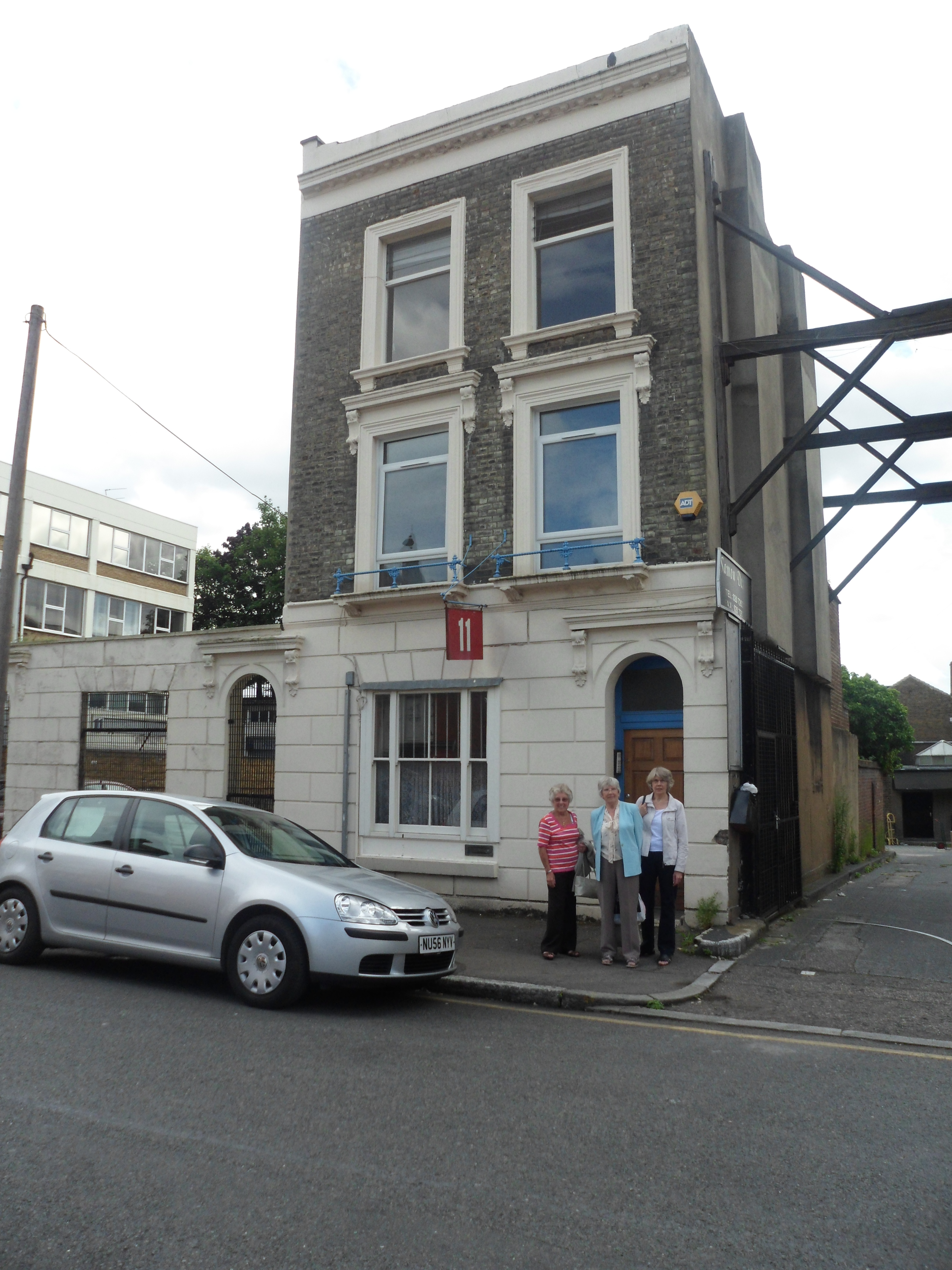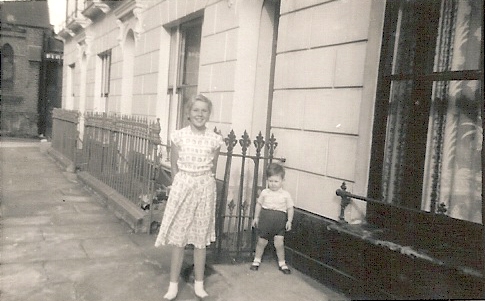At the end of May Campaign Against Arms Trade (CAAT) moved from 11 Goodwin Street, Finsbury Park, to a more modern office in nearby Wells Terrace. I wrote a nostalgic account of CAAT’s quarter of a century in Goodwin Street, celebrating its history as the home of many peace organisations and radical groups.
And that, I thought, was that. Then I received a message from Brenda, telling me that 11 Goodwin Street was her childhood home and she would love to see it again before it was demolished. There followed another message, this time from Brenda’s sister Jean, with the same request, and as it turned out, there was yet another sister, Dot, who also wanted to visit. Good things definitely come in threes.
The upshot was that we talked to the new owners and agreed a date for the three to visit. Dot, Jean and Brenda (in order from oldest to youngest) arrived at CAAT’s new office and after a cuppa set off to inspect Goodwin Street. Brenda told me how she had been fascinated by the BBC series The Secret History of our Streets (as had I) and had begun researching Goodwin Street on google when she came across my blog.
The hidden history of Goodwin Street
The Mountstephens family had lived in Goodwin Street from the early 1930s until they moved out in 1966. It was a big family – parents, four brothers and three sisters. The house rent was 11 shillings a week. The house was also the home of an old lady who lived in a room on the top floor.
At that time, Goodwin Street was a very different from today, when its main use is as access to a car park for shoppers and Arsenal fans. It was one of the liveliest streets in the neighbourhood, with a pub on the corner, a mission hall at the end, a dairy at the back, and a printers and postal sorting office (the building with its ornate façade remains but the postal work has long departed to an industrial estate). Dot had even worked in the dairy: “my first job, just a few shillings a week”.
The war years
For me, one of the most interesting aspects was to hear how Finsbury Park fared during the war years. The nearby station was a military target and so was camouflaged by huge barrage balloons. The older sisters recalled the distinct sounds made by the different types of bombs, the air raid sirens and the scramble to the Anderson shelter at the bottom of the garden. Other family members also lived in the neighbourhood and Dot remembered being despatched up Fonthill Road to check on her grandparents after each raid. Meanwhile, Jean had been evacuated from London to Blackpool.
Goodwin Street itself escaped the bombs but nearby areas were not so lucky. Dot recalled a live bomb which remained on site – the owner charged a halfpenny to view it!, There were gaping holes caused by bomb damage which remained untouched for years after the war. Some were documented by young Don McCullin, who was born in Fonthill Road. He came to fame when his photo of gang members posing in a derelict building was published in The Observer magazine. He went on to become one of the world’s great photographers, famous for his photos of soldiers and civilians in Vietnam, Cambodia, Bangladesh and Biafria
Although the war damage has long disappeared, stories like these stand as a reminder of the terrible effects of warfare on people’s lives – a prime reason why CAAT exists today.
A family home no more
Just as Goodwin Street had declined, so had no 11. The Mountstephens family lived there till 1966, when their father died – all the children had moved away by that time.
The building became a printer’s shop and office. The garden was diminished with the addition of an extension to the two lower floors. Internally, the hallway was narrowed to increase the office space on the ground floor. On the positive side, there was no longer any need for an outside toilet or a coal hole.

When the three sisters viewed the building it was in a parlous state. All the furniture and fittings had been removed and the many imperfections and makeshift repairs were all too obvious. Later Brenda wrote to me:
“It was a big surprise to all of us to see such a transformation in our old house. Upstairs was pretty much the same, but the downstairs rooms and the garden were unrecognisable. Although we all enjoyed the visit, we were sad to see the house in such a condition and we prefer to remember it as we knew it.”
“We had a nostalgic walk along Fonthill Road and Stroud Green to Crouch End. So lots of conversations along the lines of ‘Do you remember this …..’, and we found we had a lot of different memories. Thank you again for giving us a chance to look back on a bit of our family history.”
Thank you Brenda, Dot and Jean for sharing your memories with us and restoring a small part of the history of our neighbourhood in this great city of London.



